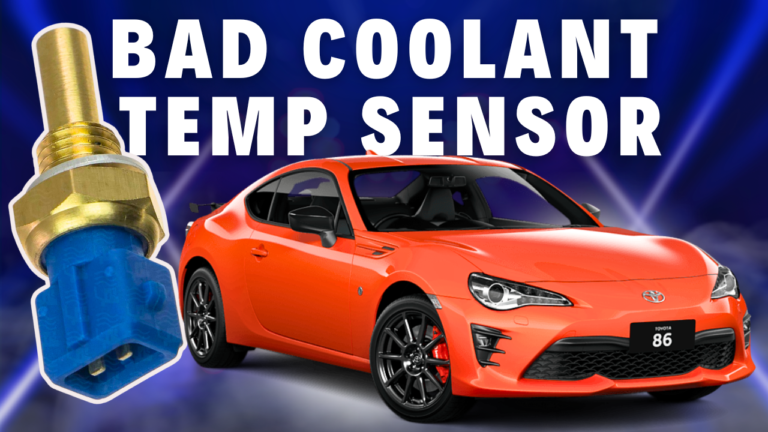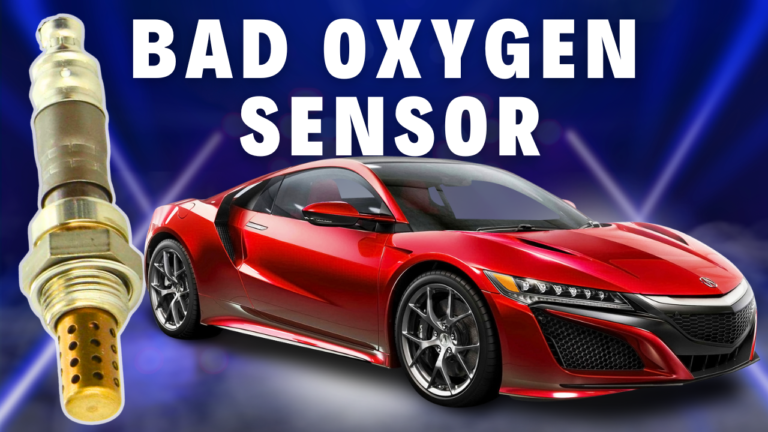What is an Intake Air Temperature Sensor?
The Intake Air Temperature (IAT) Sensor monitors the temperature of the air entering the engine. This information is crucial for estimating air density for the engine control unit (ECU).
The IAT sensor is a crucial component of the engine management system. By combining the data from the IAT sensor with other engine management system sensors, the ECU calculates the mass of air entering the cylinder and maintains the proper air-fuel ratio.
If you want to know all the sensors of the engine management system, you can check our detailed video on car EMS system sensors.
Where is Intake Air Temperature Sensor Located?
The Intake Air Temperature (IAT) sensor is typically located in the air inlet tube between the air filter box and the throttle body. In some vehicles, the IAT sensor is integrated into the Manifold Absolute Pressure (MAP) sensor. The MAP sensor with an inbuilt IAT sensor can be identified by an extra 4th pin at the connector.
Bad Intake Air Temperature Sensor Symptoms
A malfunctioning IAT Sensor can manifest in various symptoms, indicating potential issues with the vehicle’s performance:
- Check Engine Light Comes On: While a check engine light can indicate various problems, a malfunctioning IAT sensor is a frequent trigger. This happens because the engine control unit (ECU) detects issues related to the IAT Sensor and triggers relevant fault codes. A detailed list of fault codes associated with IAT sensor issues is covered in this blog.
- Poor Engine Performance: A faulty IAT sensor can lead to incorrect intake air temperature readings, which results in improper fuel/air ratio calculations. This can manifest as:
- Rough idle
- Hesitation
- Reduced power
- Sluggish acceleration
- Difficulty Starting or Stalling: Inaccurate readings from a malfunctioning IAT sensor can make it hard for the engine to start, particularly in cold weather. Additionally, it can cause the engine to stall or die shortly after starting.
These symptoms are common with issues in various components of the engine management system. To ensure that the root cause is the IAT sensor, it is necessary to read OBD-2 codes and check for specific codes related to a faulty IAT sensor.
Common Intake Air Temperature Sensor fault codes
Here is a list of codes that are associated with the bad IAT Sensor:
- P0095: Intake Air Temperature Sensor 2 Circuit Bank 1
- P0096: Intake Air Temperature Sensor 2 Circuit Range/Performance Bank 1
- P0097: Intake Air Temperature Sensor 2 Circuit Low Bank 1
- P0098: Intake Air Temperature Sensor 2 Circuit High Bank 1
- P0099: Intake Air Temperature Sensor 2 Circuit Intermittent/Erratic Bank 1
- P0110: Intake Air Temperature Circuit Malfunction Bank 1
- P0111: Intake Air Temperature Circuit Range/Performance Problem Bank 1
- P0112: Intake Air Temperature Circuit Low Input Bank 1
- P0113: Intake Air Temperature Circuit High Input Bank 1
- P0114: Intake Air Temperature Circuit Intermittent Bank 1
What Causes the Malfunction of Intake Air Temperature Sensor ?
Causes of a Faulty IAT Sensor
- Mechanical Damage: Physical damage to the sensor or its components can impair its ability to function correctly. This can result from impacts, vibrations, or improper handling during maintenance.
- Dust Buildup: Over time, dust deposits can accumulate on the sensor, hindering its ability to accurately measure the temperature of intake air.
- Internal Short Circuits: Electrical issues within the sensor itself, such as short circuits, can prevent it from sending correct signals to the Engine Control Module.
- Electrical issue: Poor connections across electrical connectors, broken wiring, blown fuses, loss of ground, or issues with previously repaired wires can disrupt the connection with the IAT Sensor.
Other Issues That Exhibit Similar Symptoms as a Bad Intake Air Temperature Sensor
When a car exhibits the symptoms mentioned above, and the IAT Sensor has been checked and found to be in working order but the issue persists, it’s essential to inspect the other components that influence the air-fuel ratio. These components can also cause imbalances in the air-fuel mixture and similar symptoms.
- Faulty Mass Air Flow (MAF) Sensor: The MAF sensor measures the mass of air entering the engine, providing crucial data for calculating the air-fuel ratio. If the sensor malfunctions, it can cause incorrect readings, leading to imbalances in the air-fuel mixture.
- Faulty Manifold Absolute Pressure (MAP) Sensor: The MAP sensor measures the pressure of air entering the engine manifold. This data is essential for calculating the air-fuel ratio. If the sensor malfunctions, it can cause incorrect readings, resulting in imbalances in the air-fuel mixture.
- Faulty Throttle Position Sensor (TPS): The TPS monitors the position of the throttle valve and provides crucial data for calculating the appropriate air-fuel ratio for combustion. If the TPS malfunctions and provides inaccurate readings, it can disrupt the air-fuel mixture, leading to symptoms similar to those caused by a faulty IAT sensor.
- Faulty Fuel Injectors: Dirty or clogged fuel injectors can disrupt the fuel spray pattern, causing an improper air-fuel mixture. This can lead to symptoms such as poor fuel economy, engine misfires, and rough idling, which are similar to those caused by a bad IAT sensor.




